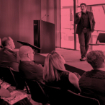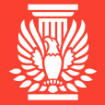Talkin’ ‘bout my generation?
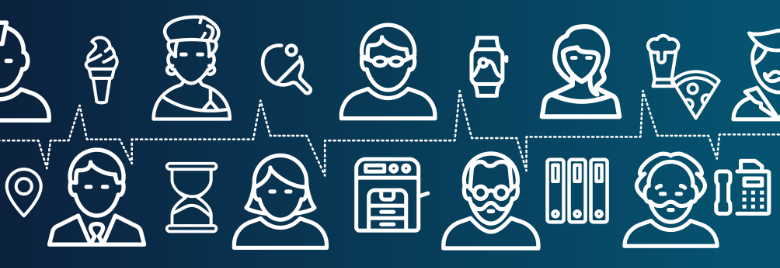
Misconceptions about generations may be holding you back
Does your office have a beer fridge? A few years ago this was the must-have office amenity, especially in tech. It was the thing you needed to attract that elusive and puzzling creature, the millennial hire. Don’t get us wrong, we love a good craft brew as much as the next person, but a critical question must be answered. Even if it gets them in the door, will that beer fridge get them to stay?
Part of building a great company is designing a workplace that suits the work style of each member of the team. We now have as many as five generations working side-by-side. Since people spend more of their time at work than eating, sleeping, or recreating, it’s worth asking how we’re getting (and vetting) our ideas about what workers want.
In this month’s "On Our Minds", we explore how busting outdated ideas of generations in the workplace could lead to a better experience (and better business outcomes) for all.
On our minds
Stop me if you’ve heard this one; millennials are fickle employees who bounce from job to job. Maybe you’ve also heard this one; tech-savvy digital natives will juice up your company’s social media presence.
For years, publications have been abuzz over the virtues and vices of millennials. This frequently-maligned generation, which is already the largest in the labor force, includes everyone born between about 1980 and 1997. With the subsequent Generation Z already coming in hot on their heels and no easy formula to help companies adapt, it might feel like the best bet is a commercial fridge full of the latest IPA’s.
When you take a closer look, though, you see that some of the ideas we have about generations and what they want are built on shaky foundations. Our collective mental image of millennials and their successors—job-hopping urbanites who tweet about their breakfast when they should be working (or competing at the Olympics)—could use a refresh. Even the millennial penchant for urban living might be on its way out.
The more things change...
Now that they’ve been entering the workforce for over a decade, we at last have some solid science on what millennials need to do their best work. It turns out they want many of the same things other generations did when they first came on the job. An analysis of scholarship on the topic found that the differences between generations were "moderate to small, essentially zero in many cases".
This study was published nearly six years ago, and previous work by authors like Don Tapscott also questioned popular generational narratives. Yet, spend just a few seconds googling "millennials in the workplace" and you’ll see that these findings were not taken to heart by the larger business community. So what gives? Why do these myths persist? For one thing, their simplicity is alluring. It would be nice if there were turnkey solutions for bridging generational divides. Alas, designing the kind of work experience people need tends to take more effort.
It’s not just for kids
It’s not just the young folks who get a raw deal here - it’s every generation. Failing to dig a little deeper than the conventional wisdom can also rob older team members of development opportunities, hamper communication, and impair our ability to accommodate diverse work styles.
Ever heard of situationism? It posits that a person’s behavior is not governed by fixed personality traits, but by their current situation, in the broadest meaning of that word. Work by Milgram and the infamous Stanford prison experiment support this notion, but we really don’t need to look any further than our own lived experience. Is there anyone you’ve known for a long time who wants the same things from work and life now that they did ten years ago? Do you?
This is great news. If we eschew the idea that a generation has unique and fixed traits, we can design workplaces that promote growth over the long term. We can do things like create opportunities for two-way mentorship and design spaces to encourage social cohesion. We at PLASTARC are also big fans of tools that can help uncover individual differences in meaningful ways that help us support each other, like Strengths Finder, MBTI, or DiSC.
Life comes at you fast
Things never stay the same for long, and the needs of workers of all generations are always evolving. Intriguing trends are pointing toward work-life integration. Co-working now has a residential complement in co-living, adding yet another wrinkle to our understanding of place and community. As is usually the case when it comes to people, the key here is nuance. If we take the time to listen to our colleagues and ask what they need to thrive, we can design a workplace experience that provides it.
From the archives
How the time flies! It’s hard to believe it’s been two years since we moderated an enlightening conversation on "Shaping User Experience from the Building to the Space In Between". Leaders from several organizations discussed how they use metrics and design to improve their workplace. If you missed it, you’re in luck, because we got it all on video. Roll tape to learn how these companies support their workers, as we like to say, “from curb to cube.”
This month back in 2015, we explored how developments in neuroscience are revealing links between workplace design and human biology. Some of our design preferences may trace their roots to early days of human evolution. Dive into the emerging field of Neuro-Architecture. If you like what you see, check out ANFA 2018 to be held in La Jolla, CA this fall.
That’s all for this edition. We love hearing from you, so please reach out if you’d like help discovering what your colleagues, of any age, really want from their workplace—or just to share your favorite fermentation (beer or kombucha) recipes.
In Case You Missed It
Recent events, current articles and things that 'caught our eye' last month:
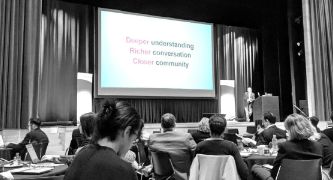
BRITE 2018
The Columbia Center on Global Brand Leadership’s 2018 BRITE Conference addressed the implications of up-and-coming technologies like blockchain and robots, and grappled with such timely issues as ‘fake news’ and the long-rumored death of brick-and-mortar retail.
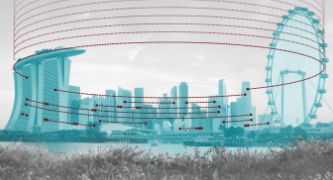
CoreNet Singapore
We traveled to Singapore to speak at the CoreNet Global Summit, March 12-15. Our panel included Comfy and HP discussing the use of mobile technology to enhance the workplace experience and increase sustainable building performance.
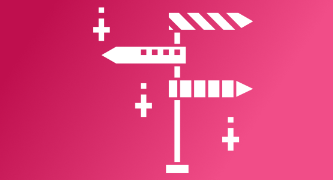
Future Offices 2018
Melissa Marsh appeared on the panel “Addressing Workplace Needs Through Trends & Tech”, discussing real estate as a service. We also shared our work on expanding the frontiers of corporate coworking with Verizon.
Looking Ahead
Spring is the perfect time to get out, connect, and learn something new. Here’s where we’ll be:
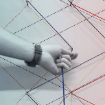
Wharton People Analytics Conference
The WPAC tagline says it all: "Evidence-based Decision Making to Help People and Organizations Thrive." We really enjoyed last year’s conference, and are looking forward to this year’s on March 22 & 23 in Philadelphia. Just announced: we'll be in the startup competition!


